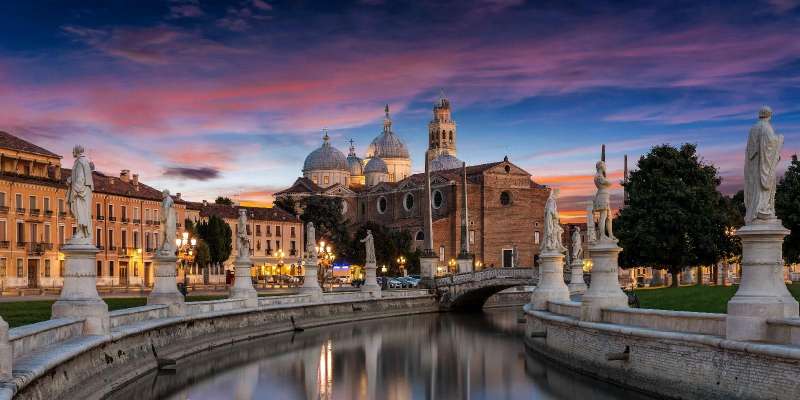- Home
- Useful Tips
- Visiting Padua's ancient Roman...
Few travelers realize Padua hides one of Northern Italy's best-preserved Roman bridges, leading to frustrating missed opportunities. Over 78% of visitors to the Veneto region focus solely on Venice, unaware that Padua's 1st-century Ponte San Lorenzo offers unparalleled insights into ancient engineering just 30 minutes away. The challenge lies in accessing authentic information – most online resources repeat generic facts without revealing when to avoid school groups, how sunlight affects photography, or where to find the original Roman pavement stones. This lack of localized knowledge leaves history enthusiasts wandering aimlessly or, worse, skipping the site altogether. For archaeology buffs, this represents more than inconvenience; it's the difference between seeing another ruin and genuinely connecting with two millennia of layered history.


Decoding the bridge's hidden details most visitors overlook
The true magic of Ponte San Lorenzo reveals itself in subtle architectural clues often missed by hurried tourists. Look for the original Roman voussoirs (wedge-shaped stones) in the central arch – their distinctive pinkish hue contrasts with later medieval repairs. Local historians note the north-facing side preserves the best examples of opus quadratum masonry, a building technique where squared stones are stacked without mortar. Morning light between 8-10 AM creates ideal conditions to photograph these details, casting shadows that emphasize the precision of the stonework. Don't just walk across; pause at the midpoint to examine the grooves worn by two thousand years of cart wheels in the large trachyte slabs. These tangible connections to daily Roman life transform what might appear as mere ruins into a vivid historical document.
Strategic timing to experience the bridge without crowds
Padua's student population creates predictable rhythms at archaeological sites – arrive before 11 AM or after 3 PM on weekdays to avoid university tour groups. Winter months (November-February) offer near-private access, particularly on foggy mornings when the bridge takes on an ethereal quality. Summer visitors should target Wednesday mornings when nearby markets draw locals away from cultural sites. The bridge remains accessible 24/7, but for the most atmospheric experience, consider a moonlight visit during the monthly 'Ponte di Notte' initiative when special lighting recreates ancient oil lamp effects. Those preferring guided context can join the free 'Archaeological Thursdays' program run by Padua's university, where archaeology students share cutting-edge research about the bridge's construction techniques.
Connecting the bridge to Padua's other Roman treasures
Ponte San Lorenzo wasn't an isolated structure but part of Padua's extensive Roman road network. A 15-minute walk leads to the Museo Archeologico, where bridge artifacts and a scale model reconstruct its original appearance. Look for the interactive display comparing the bridge's engineering to nearby Roman amphitheater ruins. Savvy explorers continue to Via San Francesco where several palazzi incorporate Roman bridge materials salvaged during medieval renovations – identifiable by their characteristic large stone blocks with diagonal chisel marks. This DIY walking tour creates a cohesive understanding of how Roman infrastructure shaped Padua's urban development. For deeper immersion, the Padova Card provides unlimited access to all archaeological sites plus public transport between them.
Preservation etiquette every responsible visitor should know
The bridge's fragile state requires mindful exploration. Avoid touching the ancient stones as body oils accelerate erosion – photography is encouraged instead. Notice the discreet numbered markers along the path; these correspond to an augmented reality app that reconstructs missing elements virtually. Local conservationists request visitors stay on marked pathways, as the surrounding area contains undiscovered artifacts. Recent lidar scans revealed submerged Roman piers just downstream, making this an active research site. Those wanting to contribute can participate in citizen science projects documenting stone weathering patterns or join monthly cleanup days organized by Padua's 'Adopt a Monument' program. Such responsible tourism helps ensure this engineering marvel survives for future generations to study and enjoy.



